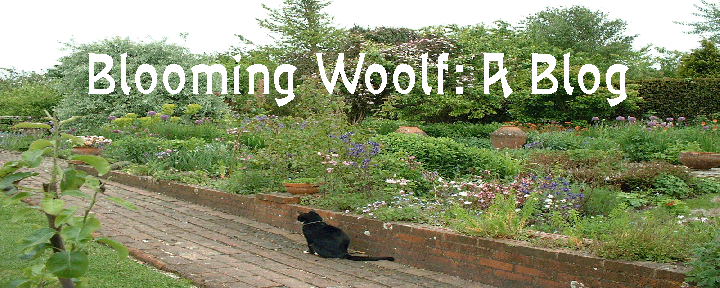It was great to meet you all and get a bit of a sense of who you are. I am making a class directory which I will post on Blackboard under CLASS MATERIALS, making it easy for you to contact each other. Once you get yr blog up, I will sign on as a follower; that way I will be notified automatically whenever you put up a new entry. You might want to follow my blog as well.
I’ve also compiled and sent in a very modest Reserve List for the class. (See below and on BB) Many of these books are explained in fuller detail in my previous entry. From what you said about your interests in class, I have some recommendations:
If you are interested in Woolf’s LIFE, I suggest first, Hermione Lee’s biography and second, Caramagno’s book, as I think it has the most balanced assessment of how her mental/ emotional states affected her work. I have been re-reading him and find his interpretations of her work consistently insightful and also often a helpful corrective to far-fetched Freudian interpretations. Quentin Bell’s classic biography has the merit of being written by someone who actually knew her –he was her nephew— but also the accompanying flaws of being written by someone who didn’t take her feminism or lesbianism or political beliefs seriously, and as a member of the family, was at pains to deny the existence of sexual abuse in her childhood.
For those of you interested in Woolf’s WRITING PROCESS, I highly recommend Julia Briggs’s book –you may want to buy it in paperback. It is an intellectual biography of the process of writing Woolf’s major texts. Of course Woolf' diaries are the best way of getting to know her life and work, but I suspect that at 5 vols. this is more than you want to take on during one semester. Leaska has some well chosen selections from the diaries in The Virginia Woolf Reader. And Leonard compiled a selection of passages particularly concerned with her writing into the book, A Writer’s Diary, available on Amazon.com for $5.95 plus shipping.
Zwerdling’s book is extremely helpful for HISTORICAL BACKGROUND. And Jane Goldman’s book on Woolf’s feminist aesthetics is very helpful for anyone interested in MODERNISM AND THE VISUAL ARTS. On this topic, see also, Chris Reed’s brilliant study of the politics of interior decoration styles in Bloomsbury Rooms. I assign his first chapter as the introductory reading assignment in my Modernist London Seminar because it so clearly lays out the battle lines btw what he calls the “domestic” aesthetic of Bloomsbury, and the “heroic”/ somewhat fascist brand of Modernism favored by Eliot, Pound, and Wyndham Lewis. And the locus classicus for all work on Woolf and the visual arts is Diane Gillespie’s book, The Sisters’ Arts, which explores Virginia’s relation to her sister Vanessa’s painting and Vanessa’s reactions to her sister Virginia’s writing.
For those of you interested in WOOLF AND FILM, I recommend that you do an MLA search for the work of Leslie Hankins, who has for many years been building up a careful and detailed study of Woolf’s exposure and reaction to modern British cinema, as well as Laura Marcus’s book, The Tenth Muse and Maggie Humm’s Modernist Women and Visual Cultures.

No comments:
Post a Comment